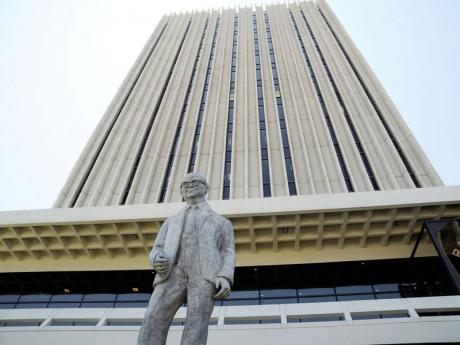Loan market expands 14%
Total loans throughout the banking system hit J$427 billion in March having climbed 14 per cent in a year, amid a dip in bad debts, according to the latest central bank data on deposit-taking institutions.
Customer deposits far outpace loans at J$609 billion, while total assets also hit a new high of J$911 billion.
The best loan performance came from commercial banks whose 16 per cent growth led to a total portfolio of over J$322 billion, followed by building societies or mortgage banks, up 9.1 per cent to J$98 billion. The loan pool of near-banks or FIA licencees fell 15.6 per cent to J$5.7 billion, according to Bank of Jamaica data.
The numbers also indicate a more healthy loan pool. Non-performing loans (NPLs), or loans unserviced for at least three months, fell by 17 per cent to J$26.6 billion, most of which have been provisioned. The year before, NPLs were expanding at a rate of 25 per cent and had risen nominally to J$32 billion.
NPLs now represent 5.7 per cent of total loans, down from 8.6 per cent a year ago.
According to prudential indicators published by the BOJ, near-bank NPLs dipped 82 per cent to J$561 million, while com-mercial bank NPLs fell 12.6 per cent to J$20.4 billion. However, building society NPLs were basically flat, rising by just 0.2 per cent to J$5.6 billion.
The loan pool among deposit-takers represent 46 per cent of their total assets. Commercial banks continue to dominate with J$690 billion of assets, followed by building societies with J$199 billion and near banks, J$22 billion.
Comparatively, the investment assets held by the institutions amount to J$250.5 billion, or 27.5 per cent of total assets.
The size of the investment portfolio fell by J$18 billion in the course of the year, some of it due to the impact of the National Debt Exchange and Private Debt Exchange under which some J$860 billion of GOJ bonds were swapped for new issues of lower coupon rates and extended maturity dates.
The swap aims to save the Government about J$17 billion per year in debt-servicing costs until 2020.

